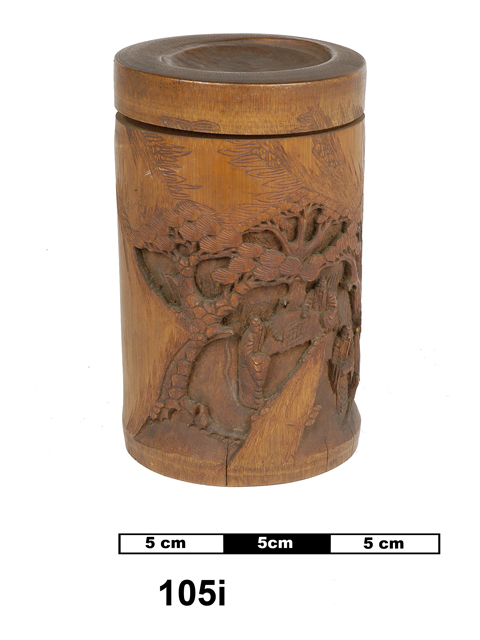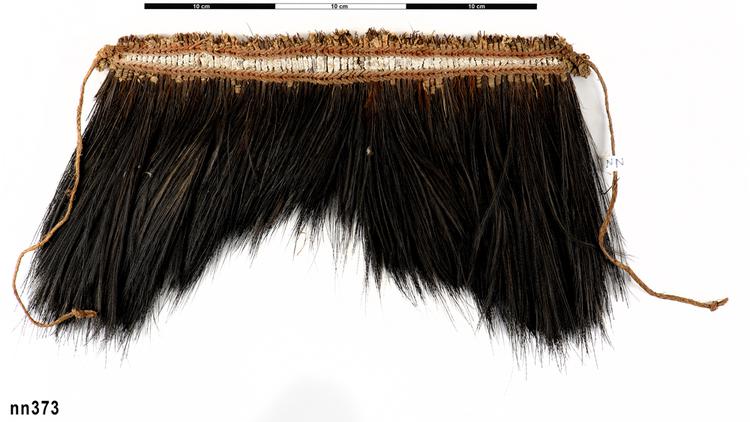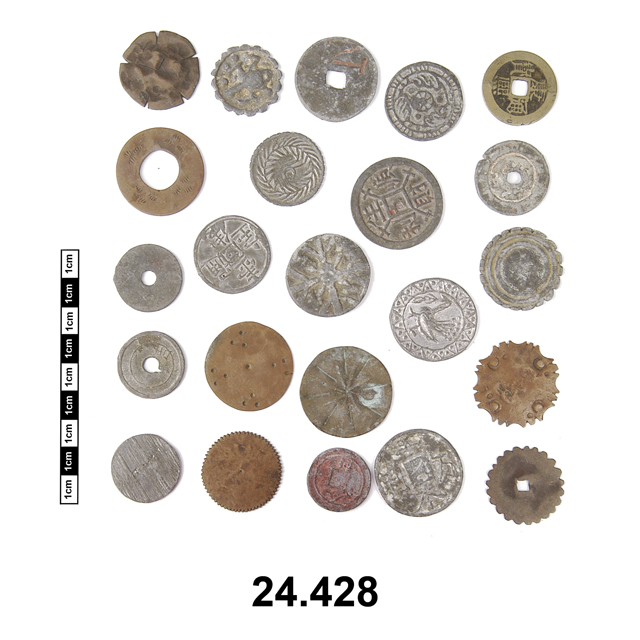
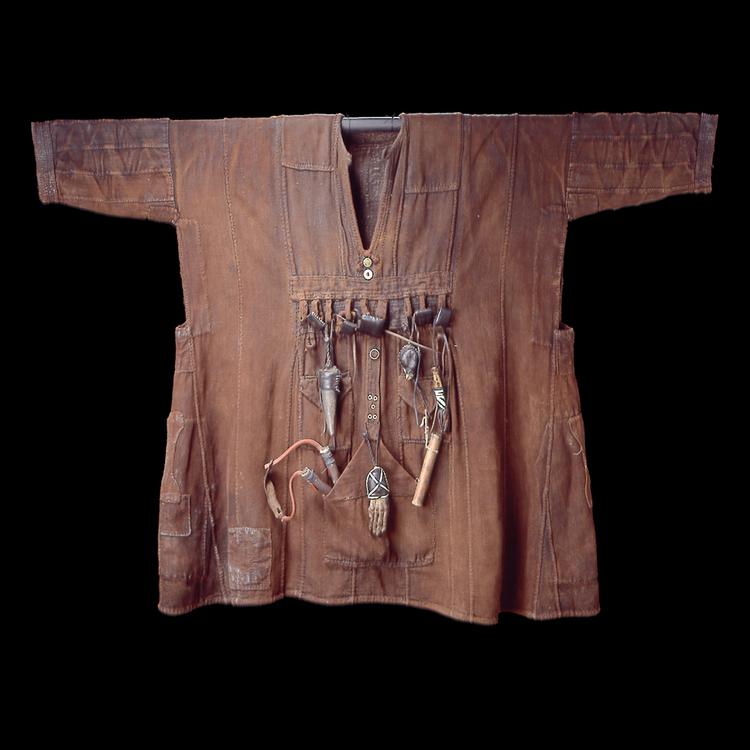
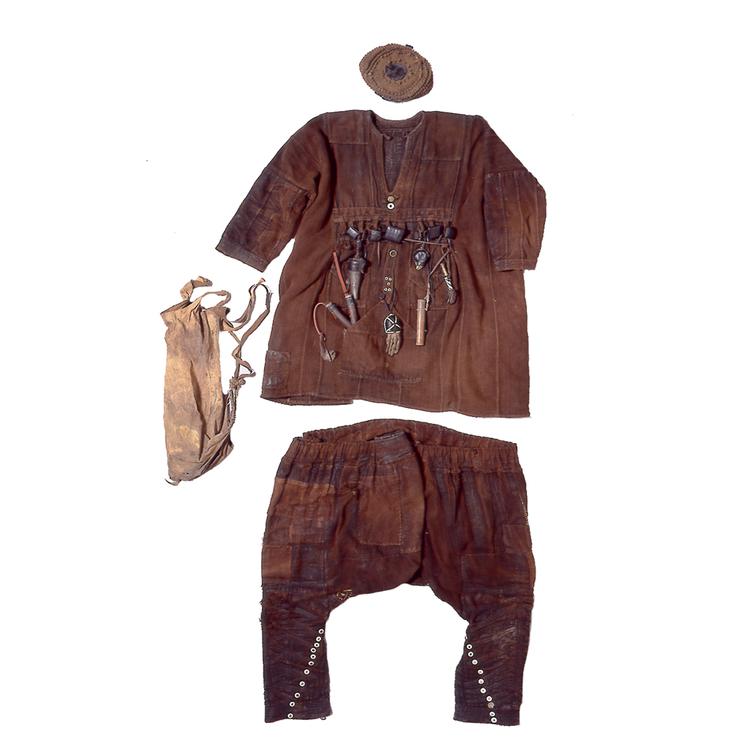
Tunic made from brown fabric with five leather amulets: a beak, a tusk, a monkey paw, a wooden object, and a wood and leather brush. These are attached to it by leather cords.
A Bamana hunters’ shirt made of woven strips of dyed cotton using the bogolan (mud cloth) technique. Bogolan or ‘mud cloth’ has tended to be associated with Bamanan hunters. They used to wear the dusty/ sandy colours to camouflage themselves in the bush, and amulets were sewn onto their shirts to protect them from the vengeance of the animals they have killed. Examples of amulets include small leather pouches, inside which, koranic verses would have been inscribed to help the hunter, mirrors and cowries. The practice of dyeing the material begins with soaking the cotton strips that have been woven together in ngalama leaves with water for several (3-4) days. Once dried in the sun, the cloth takes a dusty, brown/ sandy colour. The technique of making mud cloth was essentially carried out by women, for the hunters (men). On the hunters’ shirts: sometimes the inscriptions of koranic verses are directly applied to the surface of the tunic – but this doesn’t appear to be the case here. Each hunters’ shirt is unique and highly personalised for the wearer. This particular item also has a catapult in the pocket, for use during hunting the animals in the bush.



